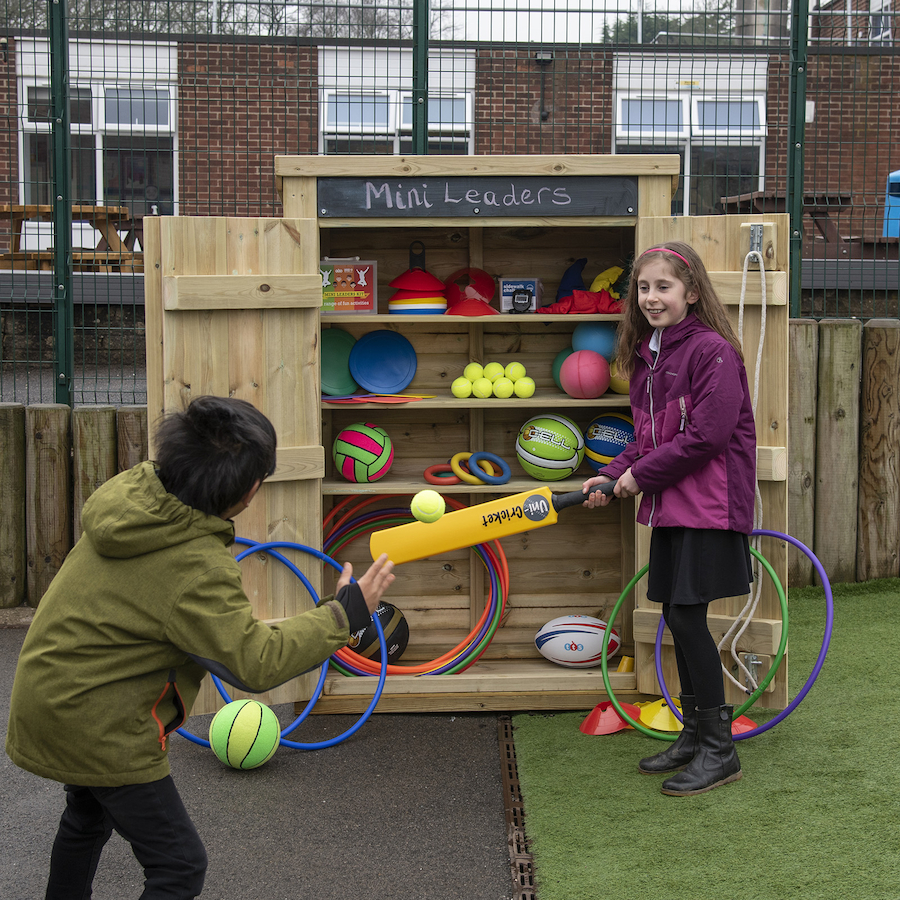Looking for ways to get children more active at break and lunchtimes? In this blog, Philippa Youlden shares her advice and top tips.
When I think back to my time at school and what I played at break and lunchtime, it was usually some kind of ball game, skipping or elastics (French skipping). Others chose to play on the field with games like football, chasing games, or British bulldog. Have you stopped and really observed what goes on in your playground? What does your break and lunchtime activity look like in your school today and does it differ from your own experiences or is it similar?
For many children break and lunchtime provide the only ‘free play’ opportunities they may have in a day. They may be driven to school, not stay for after school activities, go home to watch television or be glued to a screen. Other children will be active at break and lunchtime, they may participate in extra-curricular activities and often have an activity in the evening or play at home. Many do a combination of these.
Children and young people are becoming less active
Data from an Active Lives Survey (2020-2021) suggests that 32.4% of children and young people participate in less than an average of 30 active minutes a day. That is 2.3 million children and young people doing less than half the 60 physical activity minutes per day as recommended by the Chief Medical Officers. This figure has risen since 2019-2020. When the new figures are collated in January from 2021-2022 it will be interesting to see the change again and I fear it will be worse.
Obesity rates in our children is still a major concern with 10.1% of reception children in the obese category and 23.4% of year 6 in the obese category as measured by the 2020 NCMP. There is still a large disparity between children growing up in the most and least deprived areas. 13.6% of Reception children living in the most deprived areas living with obesity compared to 6.2% of those living in the least deprived areas and 31.3% of Year 6 children living in the most deprived areas were living with obesity compared to 13.5% of those living in the least deprived areas.
Child health is not the only victim of inactivity. Children living with obesity are also impacted by emotional and social issues such as:
- poorer emotional well-being
- being at a higher risk of depression
- developing an eating disorder in older children
- lower body image and self-esteem
- teasing or bullying
- behavioural problems
and these issues create the vicious circle of children and young people not choosing to be active.
What can break and lunch time offer?
They offer opportunities for children to:
- play, to move, to be active.
- develop and extend their social skills of communication, cooperation, negotiation and rules.
- develop their cognitive, thinking, decision making, planning and reviewing skills to name a few.
- be creative and to make up their own games, sequences, movements or role play.
Break and lunch time play also provides an outlet for energy and can help pupils to concentrate when back in class.

Creating the best environment for active break and lunchtimes
In order to encourage active break and lunchtimes, we may need to review our playground environment. Here are some thoughts and suggestions:
- Have you considered delivering a playground leaders programme? This involves training year 5 and 6 pupils to help facilitate play and activity with other pupils. The TTS Mini Leader Collection has resources and activities that can help get you started.
- Do you have access to music? An outdoor speaker playing can inspire and encourage dance and movement.
- What sort of equipment is available to pupils? Is it varied, colourful, appropriate for all skills levels? Could you create a ‘Craze of the week’ such as skipping, juggling, dancing, ball games, circus skills or hoop games? This could be launched in assembly each week to generate a buzz.

- Does your school acknowledge active children in assembly? Not necessarily the sportiest or the most able but pupils who have been active at break or lunchtime? Who have shown great team skills when active or motivated others? Recognising these positive behaviours will instill pride, enhance self-esteem in those pupils who may not previously have engaged or been recognised simply for their participation.
- Have you considered zoning your playground, with key activities in each area? This can be rotated each half term or even weekly, providing focus and variety. Remember an area for free play is always good, where children can just move and ‘be’.
Play is what lifts people out of the mundane… it is all around us, yet goes mostly unnoticed or unappreciated until it is missing…we don’t need instructions in how to play. We just find what we enjoy and do it. Whatever ‘rules’ there are to play, we learn from our playmates. From this we learn how the world works and how our friends interact.
Brown and Vaughan, 2010

Article by Philippa Youlden
Thank you to Philippa Youlden for writing this article. Philippa Youlden is a freelance PE, sport, wellbeing and education consultant passionate about the power of movement, activity and high quality PE and school sport opportunities for all children. Philippa works nationally delivering CPD, developing educational campaigns and writing resources for a range of organisations and school networks, supporting children to enjoy, thrive and fulfil their potential through PE, sport and physical activity. www.philippayoulden.co.uk


